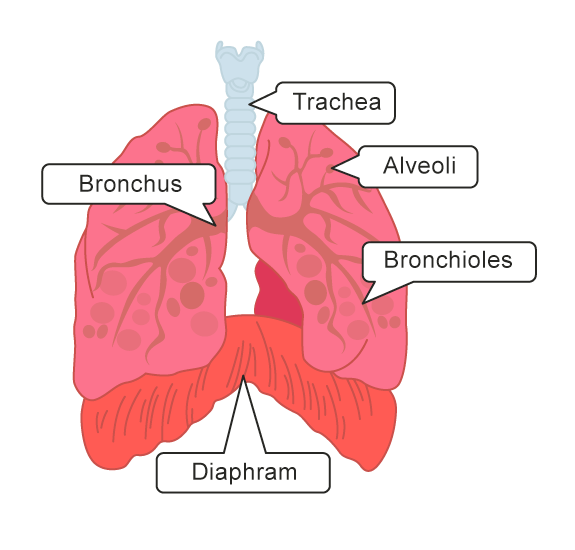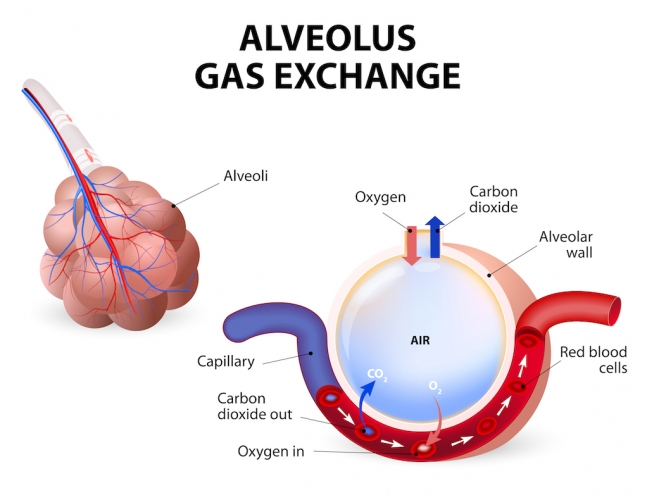From a young age, we are taught to think of our lungs as two balloons, inflating and deflating as we breathe in and out. Our lungs are, in fact, far more complex.
So how does the air get into the lungs?
As the air travels down the trachea it is forced to branch off into the two lungs through the bronchi (bronchi is simply the plural for bronchus, as shown in the diagram below):

Once the air passes into the lungs through the initial bronchi, it is then met by more branches. The branches then get smaller and smaller until they are the same thickness as a hair! These tiny branches are called bronchioles, but the story of the lungs doesn't end here as at the end of each bronchiole there are tiny air sacs called alveoli (singular alveolus).
So what happens in the alveoli?
Inside the alveoli, oxygen is absorbed into the blood and carbon dioxide is removed. This exchange of gases is called diffusion.
The alveoli provide the lungs with a large surface area for diffusion to take place on and the thin, moist walls are the perfect place for it. Having a large surface area means that there is more space for the gases to be in contact with the alveoli - more gas can pass through.
The thin walls are another great adaptation for gas exchange because it means the gases can pass through them really quickly. They're actually only one cell thick!
Gases are also helped by the moisture surrounding the alveoli walls. The gases can dissolve into the moisture which then passes through the alveoli, making the gas exchange process even quicker.
Each alveolus is also surrounded by lots of tiny blood vessels called capillaries that carry blood to and from the lungs. This means that the gases don't have to travel far to get into the blood.

As the blood passes by the surface of the alveoli, waste carbon dioxide diffuses out of the blood and into the alveoli.
At the same time, oxygen from the alveoli diffuses into the blood supply, where it is then carried around the rest of the body by red blood cells.
There's always a diffusion gradient between the alveoli and the blood. When the oxygen concentration in the alveoli is higher than it is in the blood, oxygen will diffuse out of the alveoli quickly. The same happens with carbon dioxide. When there's a high concentration of carbon dioxide in the blood, it will diffuse out of the blood and quickly into the alveoli, allowing the lungs to exhale it.
Time to put all that lovely information to the test!
In this activity, we're going to investigate the adaptations of the lungs.







